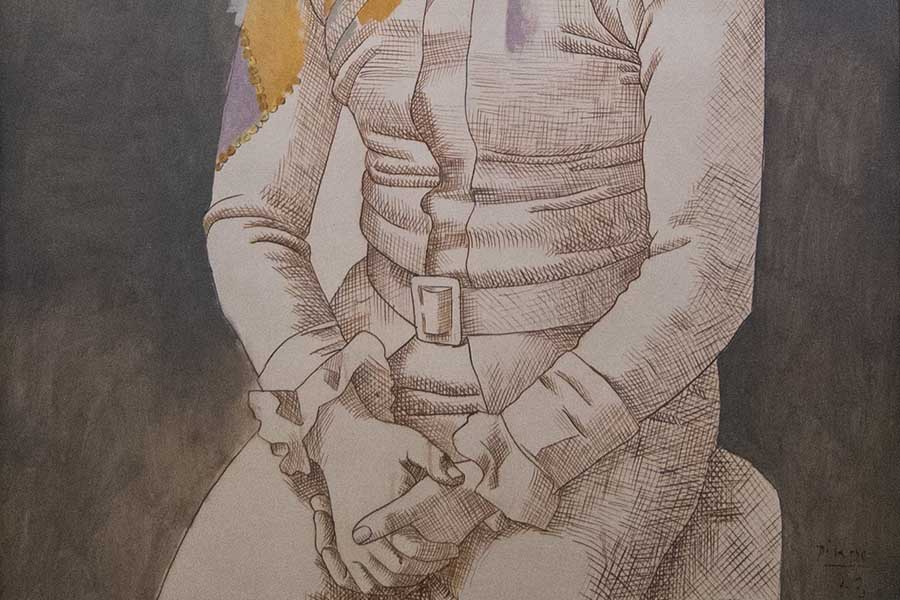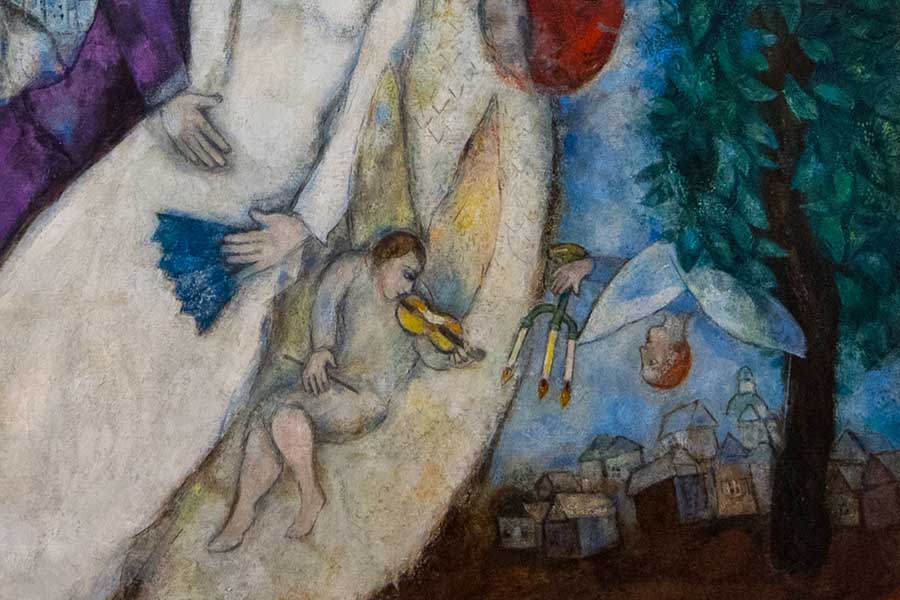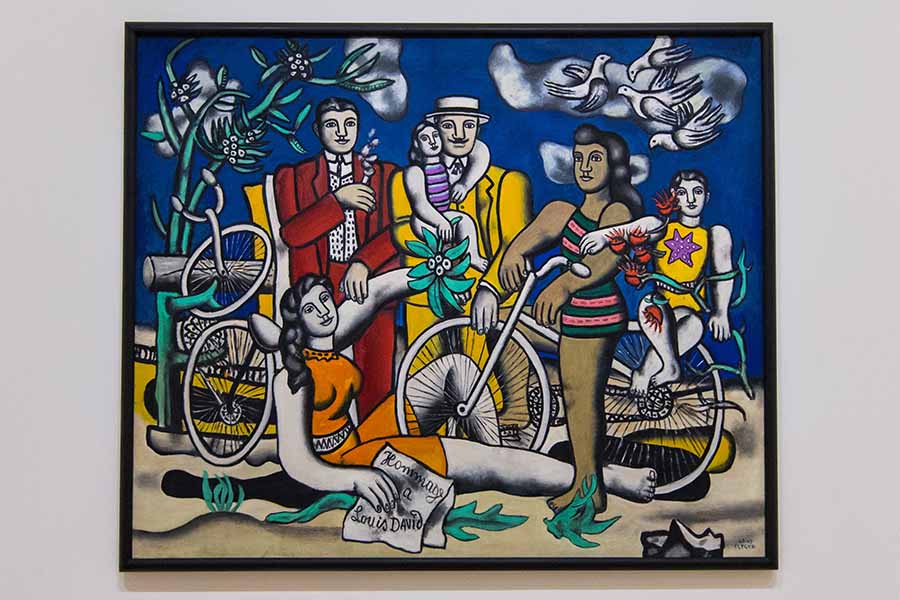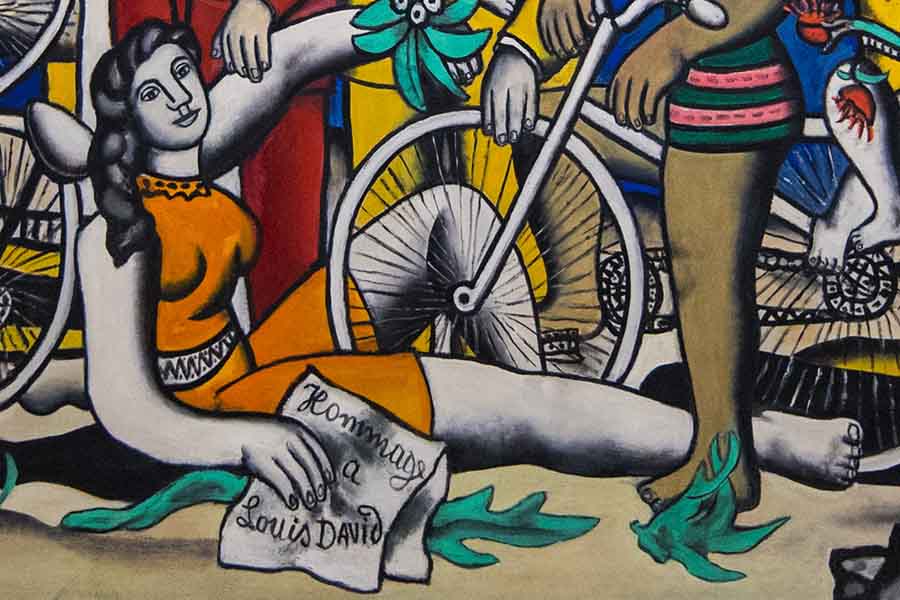Centre Pompidou artworks: discover the most emblematic creations
- January 25, 2022
- culture, news, team building

When you plan to visit Beaubourg and you wonder about Centre Pompidou artworks, you’ll discover that Booster2Success makes it easy for you. Enjoy a selection of our favorite and most impressive works of the famous museum of modern and contemporary art in Paris!
As the museum is a “living” place, it is important to note that the collections and the works exhibited often evolve within the museum. It is, therefore, possible that certain Centre Pompidou paintings will be in circulation at the time of your visit so there are always new exhibits to see. Let’s embark now on this amazing building, created by the famous architects Renzo Piano and Richard Rogers and inaugurated in 1977 by French president Georges Pompidou.
Centre Pompidou artwork: IKB 3, Blue Monochrome by Yves Klein – 1960
Let’s start our visit with a “blue” as emblematic as it is patented! Indeed, for the French artist Yves Klein, who registered his International Klein Blue in 1960, “monochrome is the only physical way to paint that allows us to reach the spiritual absolute”. Klein made this ultramarine blue his trademark and used it in many other works such as L’Arbre (tree in french), or his series of Portrait-reliefs, dating from 1962, which you can admire in the slideshow below.
Centre Pompidou famous paintings: Harlequin by Pablo Picasso – 1923
Pablo Picasso has his own room in the Centre Pompidou museum where several of his paintings are exhibited. Let’s focus on an unusual portrait, that of the Harlequin character from the Commedia dell’arte. Here Picasso chose to represent him under the features of one of his friends: Joaquín Salvado. This Centre Pompidou artwork made by the Spanish artist in 1923 is deliberately unfinished. This allows us to highlight the different stages of artistic production, but also the virtuosity and precision of Pablo Picasso’s drawing!
» READ ABOUT – Artistic team building in a museum in the heart of the Centre Pompidou
Emblematic Pompidou art: The Winter Garden by Jean Dubuffet – 1968 – 1970
Let’s continue to discover the Centre Pompidou artworks with a creation as symbolic as it is original. Let’s gather in a garden, which looks more like a cave in the work of the French artist Jean Dubuffet. You can literally enter this cave with white walls drawn with black curved lines. The space, with its bumpy walls, is meant to be a place of meditation. Go inside and experience the work that transports you between dream and contemplation!
The bride and groom of the Eiffel Tower by Marc Chagall between 1938 and 1939: a romantic painting?
This painting exhibited at the Centre Pompidou has deceptive appearances. At first glance it shows a happily married couple, flying on the back of a rooster, in front of the Eiffel Tower. Marc Chagall has represented himself and his wife Bella in a setting between Paris and Russia. On the right side of the work, the couple’s native Jewish quarter appears under the threat of a candlestick brandished by an angel. The memories of their trip to Russia are mixed with references to music and the hubbub of an impending war. Indeed, Chagall completed this painting in 1939, just before the Great War.
Centre Pompidou artworks: New York City by Piet Mondrian – 1942
The Dutch artist Piet Mondrian, one of the pioneers of abstract art, arrived in New York in 1940. He was inspired by the city’s architectural excess and dense traffic in this work entitled New York City. The lines of the painting, tracing rectangular geometric shapes, suggest New York “blocks”. The colors yellow, red and blue underline the dynamism and the American energy, reinforced by the Boogie-woogie music style, then at its peak in the 40s. It’s a piece not to be missed!
» ALSO READ – Our selection of Orsay museum famous paintings

Les Loisirs – Homage to Louis David by Fernand Léger – 1948 -1949
Here is another artist, exhibited at the Centre Pompidou, marked by a trip to New York. For the French painter Fernand Léger, the discovery of the North American cultural capital dates from 1945. After this stay, the artist declared that he was returning to “a direct art, understandable to all”. In this painting Les Loisirs (leisure activities in french), the painter bears witness to the era of the Front Populaire and glorifies paid vacations. The reference to the United States can be seen in the style of dress of certain characters.
This work is also a tribute to the painter Jacques-Louis David (1748-1825), appreciated by Fernand Léger for his style. Indeed, the woman lying in the foreground is a nod to the famous painting by David in 1793 The Death of Marat.
Centre Pompidou paintings : Manège des cochons by Robert Delaunay – 1922
Let’s now look at an artist who inspired Fernand Léger in his use of simultaneous colors. The movement of simultaneism was developed by Robert Delaunay and his wife Sonia. The principle consists in mixing forms, contrasts and colors as illustrated by the painting The Manège des cochons (Pig Carousel in french). Painted in 1922 in the middle of the Roaring Twenties, the colored discs of the painting as well as the black legs in the center seem to refer to the modernity of the city and its fairs. The man in the foreground is a friend of the couple, the poet Tristan Tzara, one of the figures of Dadaism.
[Bonus] The Agam Room, private apartments of the Élysée Palace – between 1972 and 1974
Let’s finish our visit to the museum with another colorful Centre Pompidou artworks. It is the arrangement of the antechamber of the private apartments of the Élysée Palace, for Georges Pompidou, created by the Israeli artist Yaacov Agam. This surprising arrangement was imagined following a commission from the French president in 1971.
This colorful composition extends over the entire space of the room: walls, ceilings, floor and entrance doors. The artist’s bevelled work allows the viewer to discover a different panorama depending on the angle of view. Dismantled when Valéry Giscard d’Estaing (another French president) came to power, this arrangement was presented to the public from the year 2000 at the Centre Pompidou.
If you like museums, why not explore one with your colleagues during a team building session? This way you can create more cohesion within your team while having fun and learning!
Photo credit: Booster2Success
Booster2Success creates fun and cultural team buildings in Paris.
CONTACT US to organize your next team event.
















